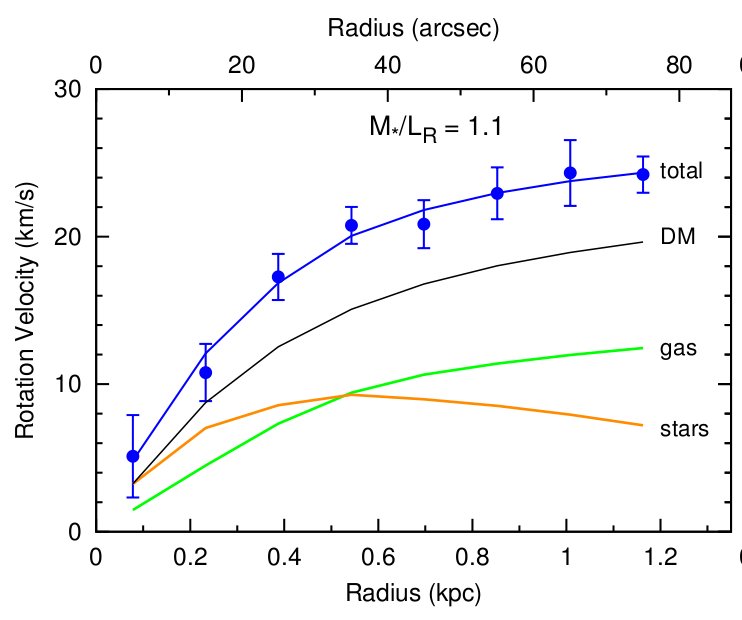The observed rotation curves of disc galaxies can be decomposed as the sum of three mass components: gas, stars, and dark matter (DM). Typically, the relative contributions of baryons and DM are highly degenerated because the stellar mass is not well-constrained by broadband observations (the so-called disc-halo degeneracy, van Albada et al. 1985). In Lelli et al. 2012 and 2014, we break this degeneracy for a sample of dwarf galaxies by using stellar masses from Hubble Space Telescope observations, which resolve these objects into individual stars. The picture below shows a mass model of UGC4483: one of the smallest galaxy in the Universe with a nearly flat rotation curve.
